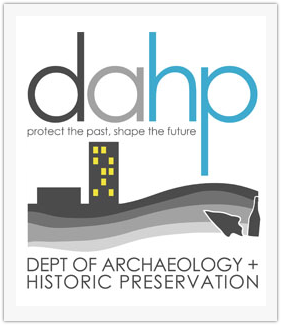DAHP RELEASES STUDY ON SUSTAINABILITY AND HISTORIC PRESERVATION
Jan 17, 2012
The Department of Archaeology and Historic Preservation (DAHP) is pleased to announce the release of its new study making the case that historic preservation is an essential and fundamental sustainability tool. DAHP contracted with University of Washington Architecture Professor Kathryn Rogers Merlino to conduct the study, performing research and pulling the information together in a report and executive summary. Both documents are available for downloading at DAHP’s website at www.dahp.wa.gov. Hard copies of the Executive Summary are also available by contacting Zee Hill at zee.hill@dahp.wa.gov. DAHP has also developed a Powerpoint presentation based on the Executive Summary. The Powerpoint may also be downloaded from the website. The initiative to conduct the study was based in the current Washington State Historic Preservation Plan: Sustaining Communities Through Historic Preservation. Drafters of the plan identified the need to insert historic preservation in statewide, if not global conversations about sustainability and reducing carbon emissions. As a result of the plan, State Historic Preservation Officer Allyson Brooks made completing the study a departmental priority. Upon initiating the project, Professor Merlino convened a steering committee of preservationists, architects, planners, and leaders in sustainability thinking and research to guide the direction, content, and format of the document. The final product distills recent data and research demonstrating how rehabilitation of historic buildings conserves energy and resources thereby cutting back on carbon emissions. The study also makes a case for repairing and maintaining historic windows rather than replacement with new windows. Case studies are included of historic building rehabilitation projects in Washington that met the Secretary of the Interior’s Standards for Rehabilitation and “green building” standards. Finally, five “next steps” are presented as recommendations for further work to solidify preservation as a cornerstone in sustainability policy and action. One important lesson we learned is that sustainability is a rapidly changing field with new research, perspectives, and solutions constantly coming to light. In completing the project, DAHP extends a big “Thank You” to the many individuals who participated in developing the document. In addition to Professor Merlino and her research assistants at UW, it is important to recognize the steering committee members, DAHP staff members, and others who contributed their time in crafting the final document. Please see the last page of the Executive Summary for an acknowledgement and list of these individuals. Our goal with this study is to provide a broad audience here in Washington with an easy to read summary of reasons why historic preservation and sustainability are natural partners. Should you have any questions or comments, contact Greg Griffith at greg.griffith@dahp.wa.gov.




